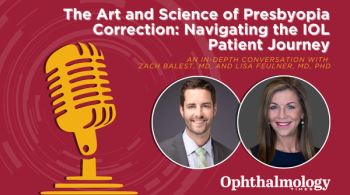
Study: PDS offers efficient drug delivery to retina for wet AMD
Mark Wieland, MD, explores how Port Delivery System with ranibizumab provides drug delivery over an extended period.
The Port Delivery System with ranibizumab (Susvimo, Roche/Genentech), an ocular implant approved recently to treat wet age-related macular degeneration (AMD), provides drug delivery over an extended period.
The implant provides a dose of 100 mg/ml that is released over 6 months. The implant was approved based on the results of the Archway phase 3 study in which the results of the implant were compared with the results achieved with injections of ranibizumab alone.
Retina specialists Mark Wieland, MD, and Jay Stewart, MD, looked at the implant’s release and refill-exchange efficiency in vitro and reported that “about 70% of the ranibizumab 100 mg/mL was released from the implant over 6 months; levels were unmeasurable after 450 days.”
Weiland discussed their findings during a presentation at the American Academy of Ophthalmology 2021 annual meeting in New Orleans.
Specifically, the mean respective active release rates at 6 months, expressed as µg/day, were 3.95, 3.99, 3.85, and 4.00 at the initial filling of the implant and at the first, second, and third refill/exchanges, they reported.
They also found that during refilling of the implant, about 98% of the previous implant contents were replaced with fresh drug in one 100 mg/mL refill.
The investigators concluded that the PDS continuously and reproducibly delivers ranibizumab over a period of months while maintaining its potency.
Newsletter
Don’t miss out—get Ophthalmology Times updates on the latest clinical advancements and expert interviews, straight to your inbox.














































.png)


